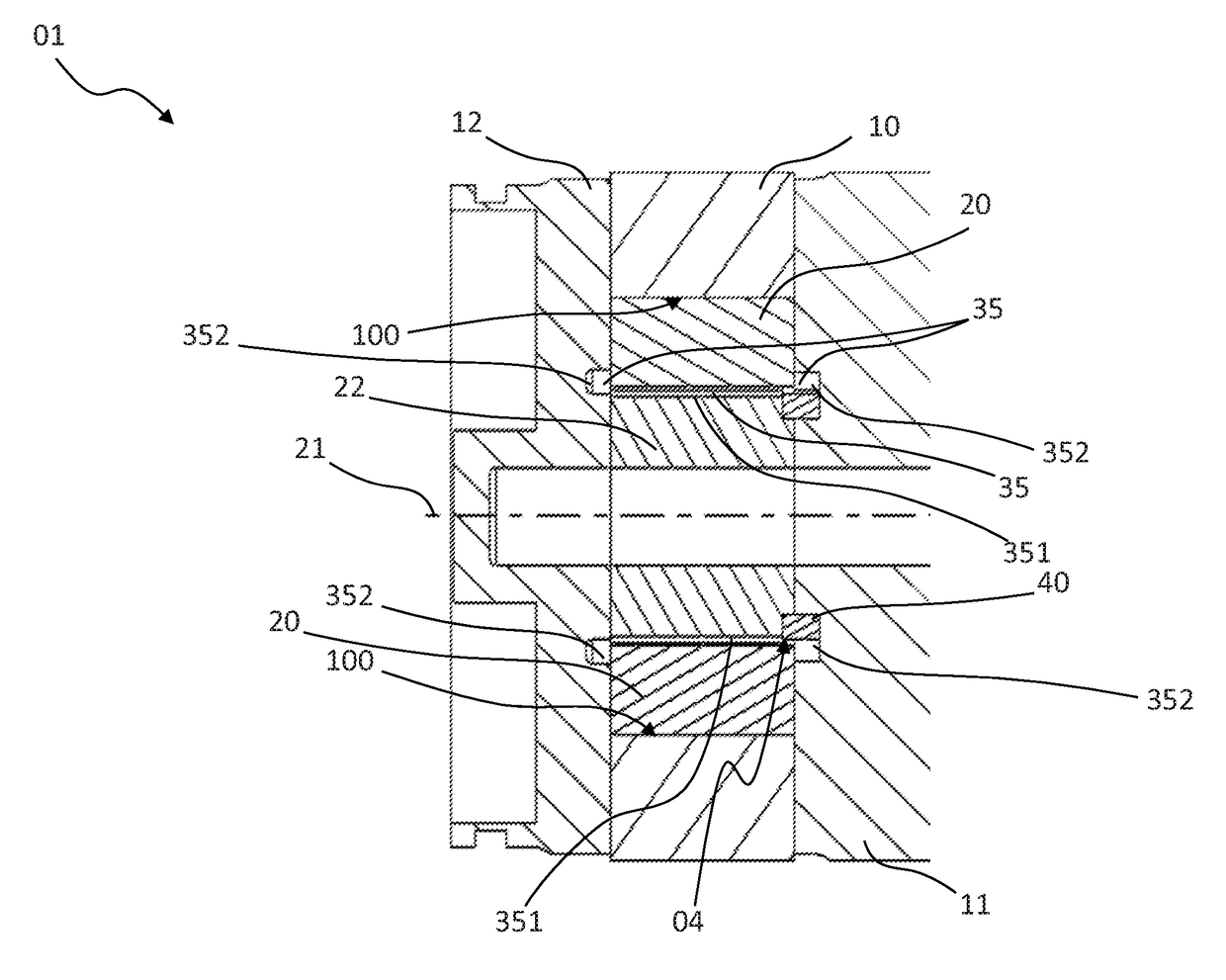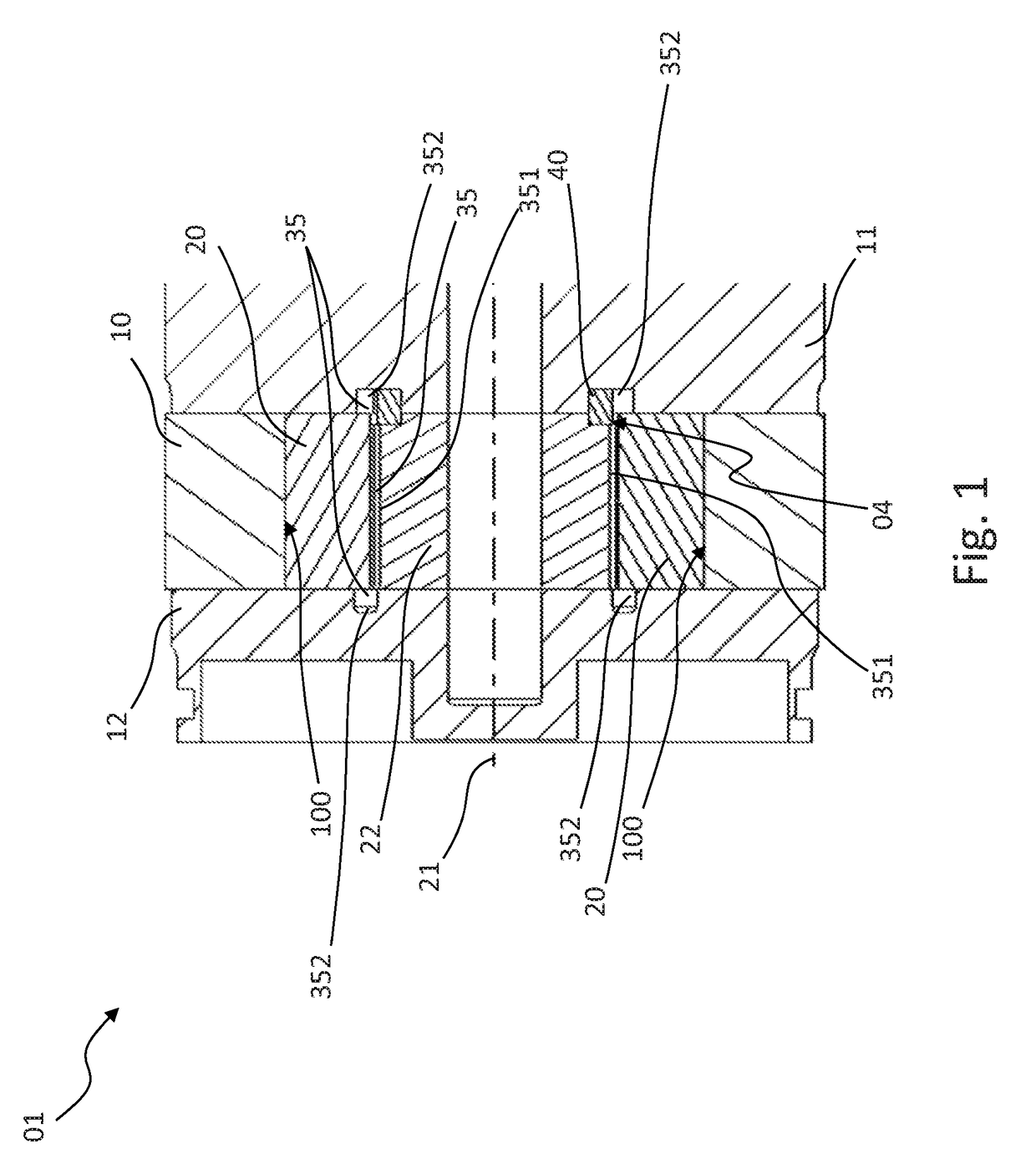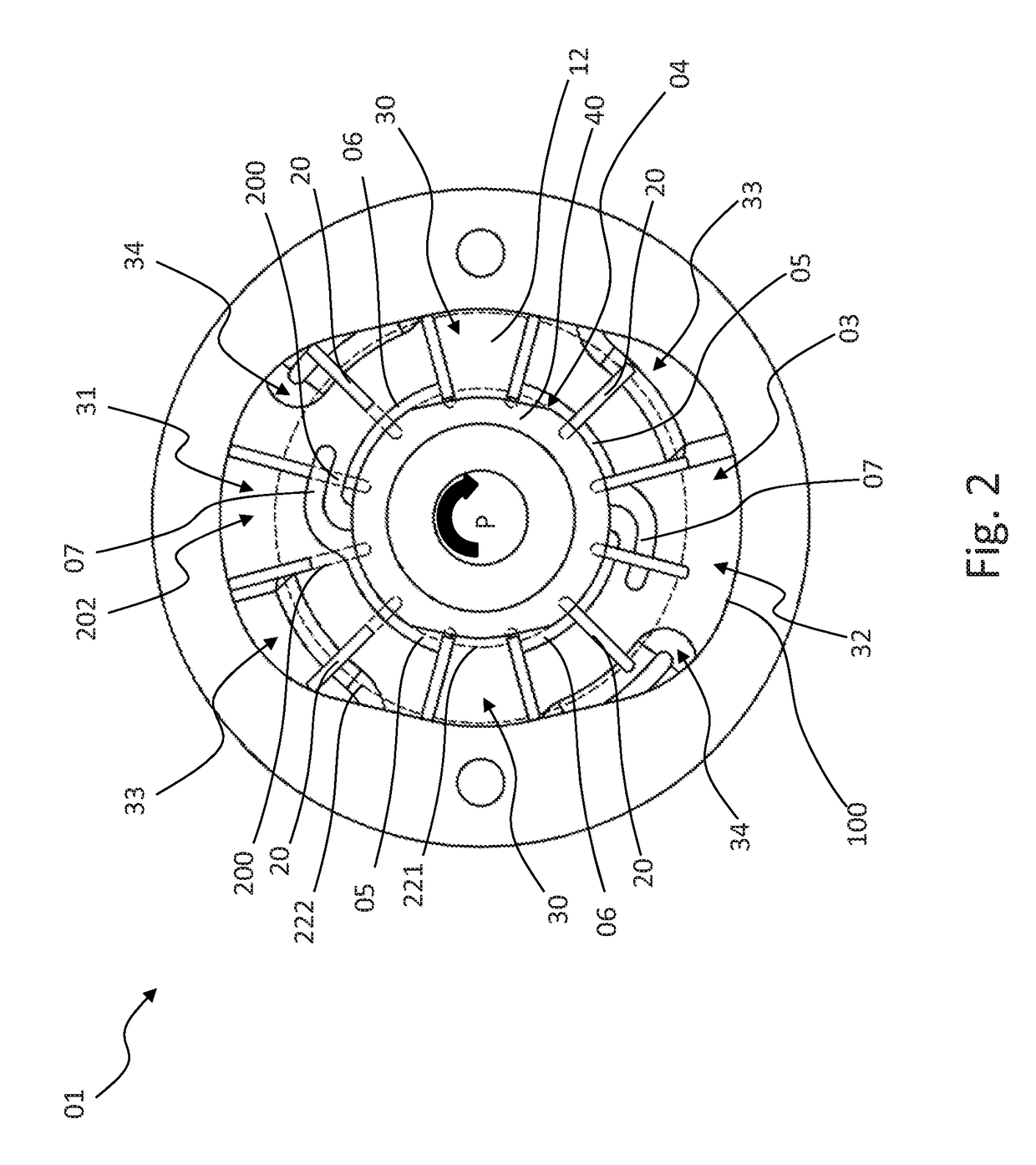Vane pump and method for the operation thereof
a technology of a vane cell and a valve body, which is applied in the direction of pump control, rotary piston liquid engine, engine components, etc., can solve the problems of difficult operation conditions, pressure build-up almost completely coming to a standstill, and significant limited conveying capacity, so as to reduce inner losses and reduce wear.
- Summary
- Abstract
- Description
- Claims
- Application Information
AI Technical Summary
Benefits of technology
Problems solved by technology
Method used
Image
Examples
Embodiment Construction
[0055]A vane cell pump 01 illustrated completely or partially in FIGS. 1 to 9 comprises:[0056]a hollow-cylindrical contour ring 10 which is arranged between two side plates 11, 12 and which has an inner peripheral face 100 and[0057]a rotor 22 which is rotatably supported about a rotation axis 21 which extends parallel with the cylinder axis of the contour ring 10 and which has a plurality of conveying elements 20 which can be displaced radially relative to the rotation axis 21 and which are urged against the inner peripheral face 100 during a rotation of the rotor 22.
[0058]The rotation axis 21 of the rotor 22 is a geometric axis. The rotor 22 may, for example, be rotatably supported on a shaft which extends along such a geometric axis or on one of the two side plates 11, 12 or on both of the side plates 11, 12, or it can be connected to a shaft which is supported about such a geometric axis and which extends along this axis.
[0059]The inner peripheral face 100 is constructed in such ...
PUM
 Login to View More
Login to View More Abstract
Description
Claims
Application Information
 Login to View More
Login to View More - R&D
- Intellectual Property
- Life Sciences
- Materials
- Tech Scout
- Unparalleled Data Quality
- Higher Quality Content
- 60% Fewer Hallucinations
Browse by: Latest US Patents, China's latest patents, Technical Efficacy Thesaurus, Application Domain, Technology Topic, Popular Technical Reports.
© 2025 PatSnap. All rights reserved.Legal|Privacy policy|Modern Slavery Act Transparency Statement|Sitemap|About US| Contact US: help@patsnap.com



